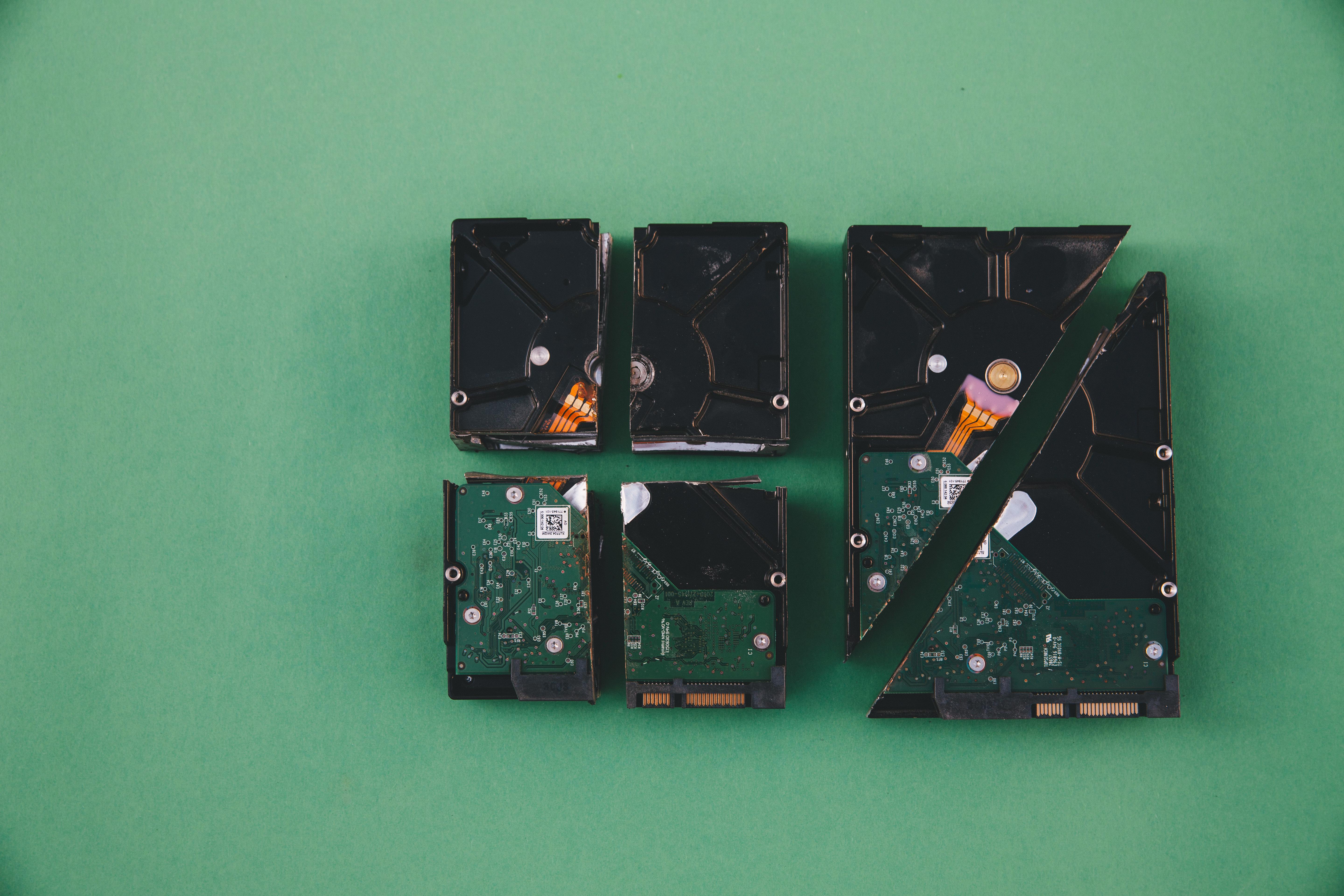Are you facing issues with your Windows 11 RAID volume degrade? You’re not alone! Many users encounter this frustrating problem, which can lead to data loss and system instability. In this article, we’ll dive into effective strategies to restore your data and get your RAID setup back to optimal performance. If you’re wondering how to fix RAID volume degrade issues and safeguard your valuable information, you’ve come to the right place!
When a RAID volume degrades in Windows 11, it typically indicates that one or more disks are failing or have lost synchronization. This can be alarming, especially if you rely on your system for critical tasks. But don’t panic! There are several steps you can take to identify the problem and restore your RAID volume. First, it’s crucial to understand the signs of degradation, such as unexpected system slowdowns, frequent errors, or missing files. By recognizing these symptoms early, you can take proactive measures to mitigate data loss.
Next, we’ll explore practical solutions to address the RAID volume degrade issue in Windows 11. From checking the health of your drives to using built-in recovery tools, we’ll equip you with the knowledge you need to troubleshoot and recover your data effectively. Plus, we’ll discuss the importance of regular backups and monitoring to prevent future incidents. So, if you’re ready to tackle this challenge head-on, let’s get started on the path to restoring your RAID volume and ensuring your data remains safe and secure!
Top 7 Proven Steps to Fix RAID Volume Degradation in Windows 11 and Safeguard Your Data

Are you experiencing RAID volume degradation in Windows 11? This common issue can lead to data loss, which is something nobody wants to deal with. In this guide, we’ll explore the top 7 proven steps to fix RAID volume degradation and safeguard your valuable data. Don’t worry, restoring your data today is possible! Let’s dive into these steps and get your system back on track.
Step 1: Identify the Problem
Before you can fix the RAID volume degrade, you must identify the underlying issue. This could be due to a failing hard drive, corrupted RAID configuration, or even a software glitch. Use Windows Event Viewer to check for error messages related to your RAID setup. Understanding the problem is crucial, so don’t skip this step.
Step 2: Backup Your Data
Before you start tinkering with your RAID setup, it’s important to backup your data. This way, if something goes wrong, you won’t lose everything. You can use external hard drives or cloud storage solutions. Make sure the backup process includes all your essential files and folders. A good practice is to back up data regularly to avoid loss in the future.
Step 3: Check the RAID Status
After securing your data, the next step is to check the RAID status. You can do this through the Windows Disk Management tool. Right-click on the Start button, select Disk Management, and look for your RAID volume. If you see signs of degradation, like “Degraded” or “Failed,” you know you need to take action.
Step 4: Rebuild the RAID Array
If your RAID configuration allows it, you can rebuild the array. This is especially true for RAID levels like RAID 1 or RAID 5. You can do this using the RAID management software provided by your RAID controller manufacturer. Follow the instructions carefully, as this process can take some time and may require your attention.
Step 5: Run Disk Checks
Running disk checks can help identify and fix issues with your disks. Use the built-in Windows CHKDSK tool to scan for errors. Open Command Prompt as an administrator and type “chkdsk C: /f” (replace C: with your RAID volume letter). This will attempt to fix any file system errors that may be causing degradation. It’s a good idea to schedule this for a time when you won’t be using the computer.
Step 6: Update Drivers and Firmware
Outdated drivers and firmware can lead to RAID issues. Go to the manufacturer’s website for your RAID controller and check for updates. Download and install the latest drivers and firmware. This can solve compatibility issues that may be contributing to your RAID volume degradation.
Step 7: Seek Professional Help
If you’ve tried all the above steps and your RAID volume is still degraded, it may be time to consult a professional. Data recovery services have specialized tools and expertise to recover data from degraded RAID volumes. While this may involve a cost, it can save you from permanent data loss.
Extra Tips to Prevent Future Issues
- Regularly monitor your RAID health using software tools.
- Schedule routine backups to avoid data loss.
- Consider using RAID monitoring software for real-time alerts.
By following these steps, you can solve Windows 11 RAID volume degrade effectively. Fixing issues as soon as they arise is essential to safeguarding your data. Don’t let RAID degradation put your data at risk. Take action today and restore your peace of mind!
Understanding RAID Volume Degradation: What Causes It and How to Prevent Data Loss in Windows 11

Understanding RAID Volume Degradation: What Causes It and How to Prevent Data Loss in Windows 11
In today’s digital world, data integrity is crucial for both personal and professional users. If you’re working with Windows 11, then understanding RAID (Redundant Array of Independent Disks) volume degradation is vital. This problem can lead to significant data loss, and recognizing its causes along with how to prevent it is essential for any computer user. Here we will explore the factors behind RAID volume degradation and offer some effective solutions.
What is RAID Volume Degradation?
RAID volume degradation occurs when one or more disks in a RAID array begins to fail or operates below optimal performance levels. This situation can happen for various reasons, and it usually results in diminished data redundancy and increased risk of data loss. Common signs of degradation includes slower performance, unexpected errors, or alerts from the RAID management software.
Causes of RAID Volume Degradation
There are several reasons that can lead to RAID volume degradation, including:
- Hardware Failures: One of the most common causes is the failure of a hard drive. Mechanical issues, electrical failures, or simply age can lead to disk failure.
- Power Issues: Sudden power outages or surges can cause inconsistent data writes, leading to corruption.
- Overheating: Disks that run too hot can fail prematurely. Proper ventilation is critical for RAID setups.
- File System Corruption: If the file system gets corrupted, it can lead to RAID degradation. This can happen due to improper shutdowns or software bugs.
- Controller Issues: A malfunctioning RAID controller can also affect the entire array, causing it to degrade.
How to Prevent Data Loss in Windows 11
Understanding the causes is only half the battle. Here are some methods you can use to prevent data loss in your RAID setup:
- Regular Backups: Always have a backup solution in place. You could use external drives or cloud storage to keep your data safe.
- Monitor Disk Health: Utilize tools like CrystalDiskInfo to regularly check the status of your disks. This can help you catch problems early.
- RAID Level Choices: Choose the right RAID level for your needs. RAID 1 and RAID 5 are popular for redundancy, while RAID 0 focuses on speed but offers no redundancy.
- Temperature Management: Make sure your RAID array has adequate cooling. Consider using fans or a dedicated server room if necessary.
- Power Protection: Invest in an Uninterruptible Power Supply (UPS) to protect against sudden power failures.
Solve Windows 11 RAID Volume Degrade: Restore Your Data Today!
If you find yourself in a situation where your RAID volume has degraded, don’t panic. There are steps you can take to restore your data.
- Identify the Problem Drive: Use your RAID management software to find out which drive is causing the issue.
- Replace the Faulty Drive: Once identified, replace the problematic drive with a new one that matches the specifications of the existing drives.
- Rebuild the RAID Array: After replacing the drive, follow the RAID management software instructions to rebuild the array. This process can take some time.
- Recover Data: If data is missing, you may need to use recovery software like Recuva or Stellar Data Recovery to try to retrieve lost files.
Additional Tips for RAID Management
- Keep Software Updated: Regularly check for updates to your RAID controller firmware and drivers to ensure optimal performance.
- Educate Yourself: Understanding RAID technology can help you make informed decisions about your data storage solutions.
With these preventative measures and solutions in mind, you can significantly reduce the risk of RAID volume degradation in Windows 11. Proper management of your RAID setup is not just about maintaining performance; it’s about ensuring your data stays safe and secure. Don’t wait for a crisis to take action; be proactive about protecting your digital assets today.
Expert Tips: How to Effectively Restore Your Windows 11 RAID Volume and Recover Lost Files

When you dealing with a RAID volume in Windows 11, it can sometimes go wrong. You might notice that your RAID volume degrade, and this can cause a lot of panic, especially if you’ve got important files you need to recover. Don’t worry, there’s a way to effectively restore your RAID volume and recover lost files. Here’s some expert tips that can help you navigate this tricky situation.
Understanding RAID and Its Importance
RAID, which stands for Redundant Array of Independent Disks, is a technology that combines multiple disk drives into a single unit. This is done for redundancy and performance. There are different levels of RAID, such as RAID 0, RAID 1, and RAID 5, each having its pros and cons. Knowing which RAID level you are using is crucial because it can affect how you recover your data.
Here’s a quick rundown of common RAID levels:
- RAID 0: Offers no redundancy, only speed. If one disk fails, all data is lost.
- RAID 1: Mirrors data across two disks. If one disk fails, the other still has all the data.
- RAID 5: Stripes data with parity across three or more disks. This can survive a single drive failure.
Steps to Restore Your Windows 11 RAID Volume
If your RAID volume degrade, follow these steps to attempt recovery of your lost files:
-
Check the Status of Your RAID: Using Windows Disk Management, see if the RAID volume is still recognized. Right-click on “This PC,” select “Manage,” and then click “Disk Management.”
-
Backup What’s Left: Before doing anything else, if the RAID is partially functioning, try to back up any accessible data. Time is critical here!
-
Use Windows Repair Tools: Windows has built-in repair tools that can fix minor errors. You can access these tools by running the command prompt as an administrator and typing
chkdsk /ffollowed by the drive letter. -
Rebuild the RAID: If you are using RAID 1 or RAID 5, you may need to rebuild the array. This can usually be done through the RAID controller or software utility.
-
Data Recovery Software: If the above steps do not work, consider using data recovery software. Some popular options include:
- EaseUS Data Recovery Wizard
- Recuva
- Stellar Data Recovery
Important Considerations
-
Don’t Write New Data: Avoid writing new data to the RAID volume after a failure, as this can overwrite lost files and make recovery impossible.
-
Professional Help: If the data is extremely important and the above methods don’t work, it might be worth contacting a professional data recovery service. They have specialized tools and expertise to recover data from degraded RAID volumes.
-
Regular Backups: To avoid such situations in the future, regularly back up your data. Use an external drive or cloud storage solutions.
Conclusion
Dealing with a degraded RAID volume in Windows 11 can seem daunting, but with the right approach and tools, you can recover your lost files. Always start with checking the status of your RAID, back up whatever you can, and use the built-in repair tools before moving on to data recovery software. Remember, regular backups are essential in maintaining the integrity of your data. By taking these proactive measures, you can protect your valuable information and minimize the risk of data loss in the future.
Troubleshooting Windows 11 RAID Volume Issues: A Comprehensive Guide to Data Recovery

Navigating the complexities of Windows 11 RAID volume issues can be overwhelming for many users. When your RAID (Redundant Array of Independent Disks) setup degrades, it can lead to significant data loss if not addressed promptly. This guide aims to provide you with essential troubleshooting steps for Windows 11 RAID volume problems, so you can recover your important data quickly and effectively.
Understanding RAID and Its Importance
RAID technology is crucial for data storage, combining multiple hard drives to improve performance and redundancy. It helps protect your data from failure, but it can also be fragile. There are different RAID levels, such as RAID 0, RAID 1, RAID 5, and RAID 10. Each has its advantages and disadvantages. For example:
- RAID 0: Offers high performance but no redundancy.
- RAID 1: Mirrors data across two drives for redundancy.
- RAID 5: Balances performance with data protection through parity.
- RAID 10: Combines the benefits of RAID 0 and RAID 1 for speed and redundancy.
Knowing which RAID level you are using can help you troubleshoot problems better.
Common RAID Volume Issues in Windows 11
Several issues can cause your RAID volume to degrade, including:
- Drive Failure: One or more drives in the array fail.
- Corrupted RAID Configuration: Sometimes the RAID metadata gets corrupted.
- Power Outages: Sudden power cuts can disrupt RAID operations.
- Software Conflicts: Incompatibility with Windows 11 updates or drivers.
Troubleshooting Steps to Solve Windows 11 RAID Volume Degrade
-
Check Disk Status: Open the Disk Management tool by right-clicking on the Start menu and selecting Disk Management. Look for any disks marked as “Not Initialized” or “Unallocated.” This might indicate a problem.
-
Run Check Disk Utility: Use the built-in Check Disk tool to scan for file system errors. Open Command Prompt as an administrator and type
chkdsk /f X:(replace X with your RAID volume letter). -
Verify RAID Configuration: If you have a RAID controller, access its management software. Check if the RAID array is functioning correctly or if it requires rebuilding.
-
Attempt to Restore from Backup: If you have recent backups, this is the best way to recover lost data. Always keep regular backups to avoid data loss from RAID failure.
-
Use Data Recovery Software: If the RAID volume is degraded but not completely failed, consider using data recovery tools. Some popular options are Recuva, EaseUS Data Recovery Wizard, and Stellar Data Recovery.
Signs You Need Professional Help
If you’re encountering any of these signs, it might be time to reach out to a data recovery specialist:
- Your RAID array is completely offline.
- You hear unusual noises from the drives.
- You cannot access your data after trying basic troubleshooting.
- Multiple drives show signs of failure (e.g., SMART errors).
Preventing Future RAID Volume Issues
To avoid facing RAID volume degradation in the future, consider the following tips:
- Regularly check the health of your drives.
- Keep your RAID firmware and drivers updated.
- Use a UPS (Uninterruptible Power Supply) to prevent power loss.
- Schedule routine backups of critical data.
Troubleshooting Windows 11 RAID volume issues does not have to be a daunting task. By following the steps above, you can restore your RAID configuration and recover your data. Remember, being proactive is key to protecting your data and ensuring your RAID system runs smoothly. Don’t wait until it’s too late; take action today to safeguard your digital assets.
The Ultimate Checklists: Assessing and Fixing RAID Volume Degradation in Windows 11 for Maximum Data Security

In the digital age, data security is paramount. Windows 11 users often rely on RAID (Redundant Array of Independent Disks) configurations for enhanced data integrity and performance. However, RAID volumes can degrade over time. This degradation can lead to data loss, which is a nightmare for anyone. Knowing how to assess and fix RAID volume degradation is essential. Below is the ultimate checklist to tackle this problem, ensuring your data remains secure and accessible.
Understanding RAID Volume Degradation
RAID setups are designed to improve performance and provide redundancy. However, there are various reasons why RAID volumes might degrade:
- Disk Failures: Hard drives can fail due to age, wear, or manufacturing defects.
- Power Outages: Sudden power loss can lead to RAID array inconsistencies.
- Human Error: Accidental deletion or misconfiguration can cause problems.
- Software Bugs: Issues in the operating system or RAID management software can also be a factor.
If you notice any signs of RAID degradation, like slow performance or unusual noises from your drives, it’s critical to act fast.
Initial Assessment Checklist
- Check RAID Status: Use Windows 11 Disk Management or RAID management software to see if the RAID volume appears healthy.
- Monitor Disk Health: Use SMART tools to evaluate the health of each disk in the array. Look for any warnings or errors.
- Review Event Logs: Check Windows Event Viewer for any disk-related errors that could indicate issues.
- Backup Important Data: Before making any changes, ensure you have a complete backup of your important data.
Fixing RAID Volume Degradation
If you’ve confirmed that there’s an issue, follow these steps to restore your RAID volume:
- Identify the Failed Disk: If any disks show signs of failure in your RAID array, replace them immediately.
- Rebuild the Array: After replacing a disk, use your RAID management tool to rebuild the array.
- Run Check Disk: Execute the CHKDSK command in Windows 11 to scan for and repair file system errors.
- Restore from Backup: If your data is lost, consider restoring it from the backup you created earlier.
Common RAID Configurations
There are several types of RAID configurations, each with its advantages and disadvantages:
- RAID 0: No redundancy, but offers high performance. If one disk fails, all data is lost.
- RAID 1: Mirrors data across two disks. If one fails, the other still holds the data.
- RAID 5: Requires at least three disks and offers a good balance of performance and redundancy.
- RAID 10: Combines RAID 1 and RAID 0, providing excellent performance and redundancy.
Data Recovery Solutions
If your RAID volume is severely degraded and data recovery is necessary, consider these solutions:
- DIY Software: There are several software options available that can attempt recovery from RAID failures. Look for reputable brands.
- Professional Services: If DIY methods fail, it may be necessary to consult with data recovery professionals.
Regular Maintenance Tips
To prevent RAID degradation in the future, follow these maintenance tips:
- Regularly Monitor Disk Health: Check SMART data periodically to catch issues early.
- Keep Software Updated: Ensure your RAID management software is up-to-date to benefit from the latest features and fixes.
- Conduct Regular Backups: Schedule regular backups to protect against data loss.
By employing these strategies, you can not only assess and fix RAID volume degradation but also ensure that your data remains secure in your Windows 11 environment. Your data safety is too important to ignore, so take action today to prevent potential loss in the future!
Conclusion
In conclusion, addressing a degraded RAID volume in Windows 11 is crucial for maintaining the integrity and performance of your data storage. We explored the signs of RAID degradation, including unexpected errors and reduced performance, and discussed various troubleshooting steps such as checking disk health, using Windows tools like Disk Management, and utilizing third-party software for deeper analysis. Additionally, we highlighted the importance of regular backups to prevent data loss during RAID recovery. By following these steps, you can effectively diagnose and resolve RAID issues, ensuring your system remains robust and reliable. As technology continues to evolve, staying informed about RAID management is essential. We encourage you to regularly monitor your RAID status and take proactive measures to safeguard your data. Don’t wait for a problem to arise—take action today to ensure your RAID setup is functioning optimally.

